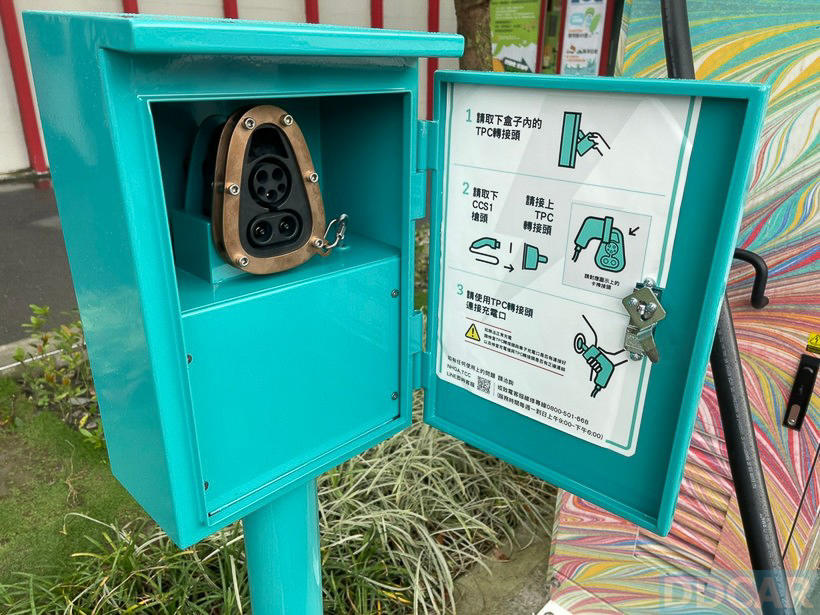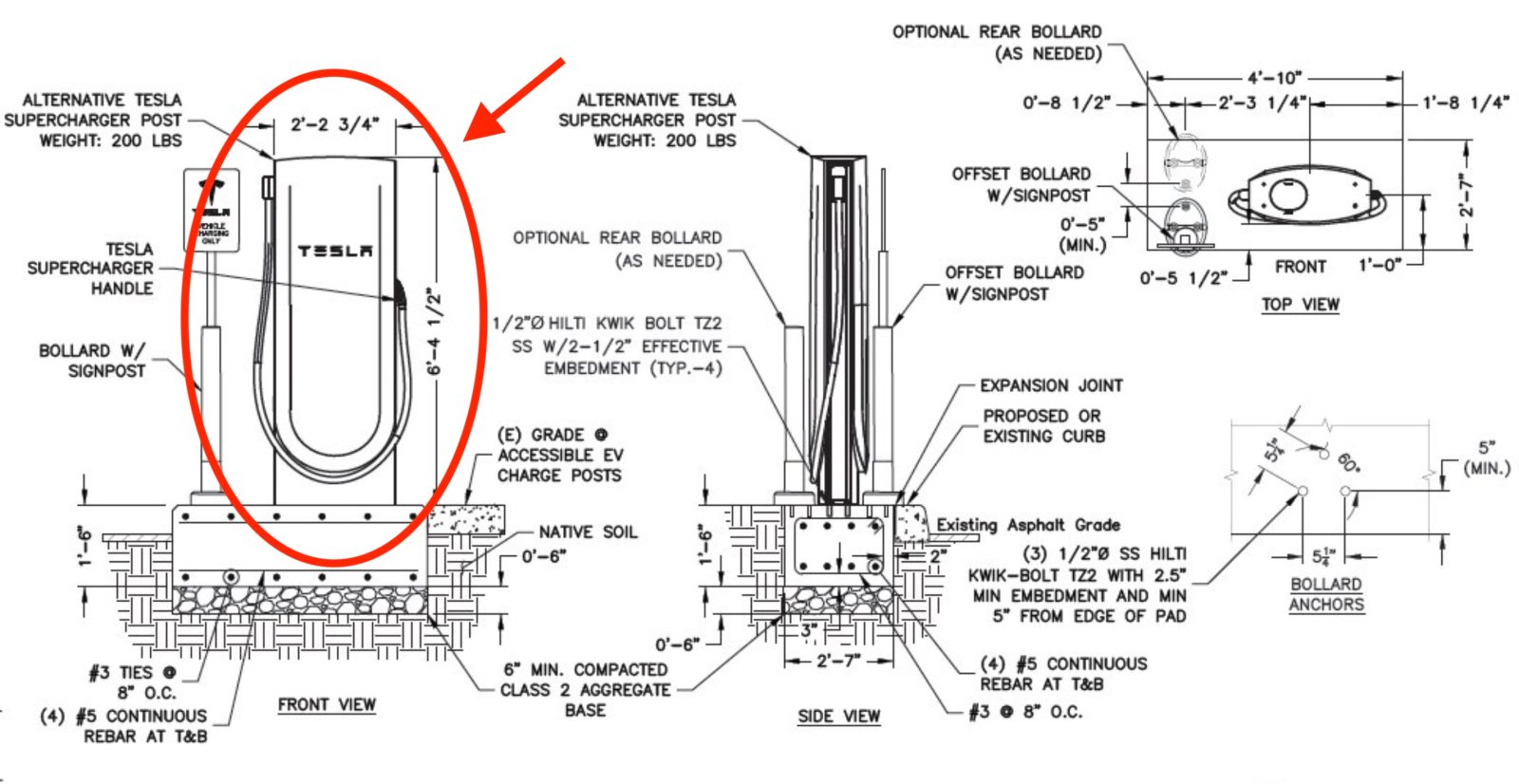We've seen the announcement that Tesla will open 3,500 supercharger stalls (probably new ones) to use by CCS cars and, announcing this in concert with the White House, will presumably receive federal money to do this. The question is, just how big an opening of the network is this?

 www.whitehouse.gov
www.whitehouse.gov
In particular, none of the supposedly "leaked" diagrams of Tesla's "magic dock" -- sometimes depicted as a NACS to CCS adapter built into the stall which can be unlocked and used by CCS cars, and sometimes shown as a dual-cord stall -- show an ordinary length charging cord. All Tesla drivers know it can be fairly hard to get the Tesla cord into their car's port which is right at the rear corner of the car. No other car has the port exactly at that corner (or the opposite front) though the Lexus and Mitsubishi have it somewhat close, and maybe an e-Tron could pull it off with a slightly longer cord. Hyunda/Kias could use it if they parked half a parking space over which we don't want.
Tesla could, to be sneaky, keep their cord and say "we support CCS" but for very few cars. They don't care that much about the bad press this would bring. Tesla cords now use liquid cooling and you can't just stick an extension cord on them.
The expansion is not that much. Tesla has 17,000 chargers now and says it will have double that (34,000) in the same timeframe, so only 10% of their stalls will support CCS. These will presumably be only new installations, and possibly not all the stalls at a station to boot. There are some places like Oregon where getting grants requires having a 350kW station, which Tesla can presumably support with their new V4 supercharger which handles up to 1,000v.
The WH announcement talks of even more money beyond the $5B NEVI program being administered by the states. That program puts a lot of rules on stations which don't match the way Tesla designs stations -- and usually stupid rules, though a few of them, like support for plug-and-charge and exporting stall availability status to appear in other apps, make sense. Screens, credit cards and 150kW minimums at all times on 4 ports are mistakes that come from the government and lobbyists designing your charging station.
Tesla has many other avenues to discourage non-Tesla use of these 10% of their chargers. They will charge CCS drivers more, but they are also offering a $1/month membership according to reports which will bring the price down. Nothing would forbid them from giving power priority to Teslas (or members) except at the 4 NEVI stalls. And they could make only a few stalls support CCS, making the stations less attractive to CCS drivers. (If a station has 32 stalls and only 4 support your car, you may feel less inclined to use it.)
Or will they, as they have said they want to do, embrace the CCS cars -- give them good prices, make all stalls support CCS and put longer cords on all stalls, at least for a CCS cord?

"Tesla Supercharger" by Open Grid Scheduler / Grid Engine is marked with CC0 1.0.
Admin note: Image added for Blog Feed thumbnail

FACT SHEET: Biden-Harris Administration Announces New Standards and Major Progress for a Made-in-America National Network of Electric Vehicle Chargers | The White House
Made in America Policies and New Technical Standards Support the Future of the Electric Vehicle Charging Industry, Public and Private Actions Accelerate Buildout of National Network and Catalyze Manufacturing Boom Today, the Biden-Harris Administration announced its latest set of actions aimed...
In particular, none of the supposedly "leaked" diagrams of Tesla's "magic dock" -- sometimes depicted as a NACS to CCS adapter built into the stall which can be unlocked and used by CCS cars, and sometimes shown as a dual-cord stall -- show an ordinary length charging cord. All Tesla drivers know it can be fairly hard to get the Tesla cord into their car's port which is right at the rear corner of the car. No other car has the port exactly at that corner (or the opposite front) though the Lexus and Mitsubishi have it somewhat close, and maybe an e-Tron could pull it off with a slightly longer cord. Hyunda/Kias could use it if they parked half a parking space over which we don't want.
Tesla could, to be sneaky, keep their cord and say "we support CCS" but for very few cars. They don't care that much about the bad press this would bring. Tesla cords now use liquid cooling and you can't just stick an extension cord on them.
The expansion is not that much. Tesla has 17,000 chargers now and says it will have double that (34,000) in the same timeframe, so only 10% of their stalls will support CCS. These will presumably be only new installations, and possibly not all the stalls at a station to boot. There are some places like Oregon where getting grants requires having a 350kW station, which Tesla can presumably support with their new V4 supercharger which handles up to 1,000v.
The WH announcement talks of even more money beyond the $5B NEVI program being administered by the states. That program puts a lot of rules on stations which don't match the way Tesla designs stations -- and usually stupid rules, though a few of them, like support for plug-and-charge and exporting stall availability status to appear in other apps, make sense. Screens, credit cards and 150kW minimums at all times on 4 ports are mistakes that come from the government and lobbyists designing your charging station.
Tesla has many other avenues to discourage non-Tesla use of these 10% of their chargers. They will charge CCS drivers more, but they are also offering a $1/month membership according to reports which will bring the price down. Nothing would forbid them from giving power priority to Teslas (or members) except at the 4 NEVI stalls. And they could make only a few stalls support CCS, making the stations less attractive to CCS drivers. (If a station has 32 stalls and only 4 support your car, you may feel less inclined to use it.)
Or will they, as they have said they want to do, embrace the CCS cars -- give them good prices, make all stalls support CCS and put longer cords on all stalls, at least for a CCS cord?
"Tesla Supercharger" by Open Grid Scheduler / Grid Engine is marked with CC0 1.0.
Admin note: Image added for Blog Feed thumbnail






